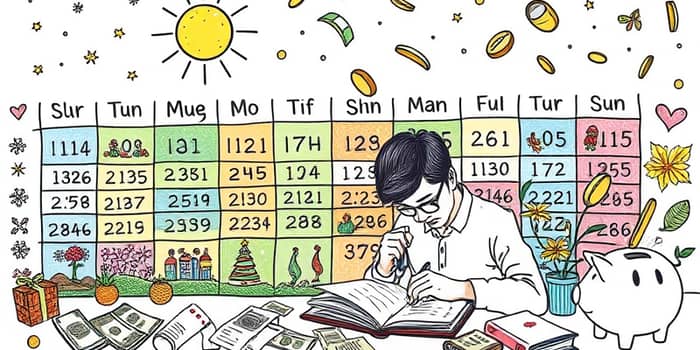
No matter your income or financial goals, the cycle of seasons brings with it a predictable rhythm of expenses. From icy winter heating bills to spring holiday celebrations, each quarter demands its own unique budgetary adjustments. By embracing the ebb and flow of consumer spending habits, you can transform potential stress into a source of empowerment for your long-term financial health.
Consumer spending doesn’t remain static throughout the year. Instead, it follows a clear pattern: peaks around major holidays and troughs in the post-event lulls. Understanding these patterns empowers you to allocate resources more strategically and prevents last-minute scrambling.
Consider that during the winter holiday season Americans plan to spend an average of $1,205 on Christmas alone, covering gifts, decorations, festive meals, and travel. Meanwhile, Easter spending in 2025 is projected to hit $23.6 billion nationwide. Without forethought, these significant outlays can derail an otherwise solid budget.
Preparing for fluctuations means recognizing that up to 35% of annual costs may concentrate in the holiday quarter. By incorporating this reality into your plan, you shield yourself against debt accumulation and emotional strain.
Annual holidays don’t just signal gatherings; they create consumer surges across multiple sectors. Here are some of the most notable spikes:
Online sales also climb dramatically. In Cyber Monday 2024, U.S. consumers spent $13.3 billion online, a 7% year-over-year increase, with $15.8 million slipping through payment terminals every single minute during peak hours.
Not all households approach seasonal spending the same way. Age, income level, and cultural habits shape priorities and coping strategies:
Recognizing your own tendencies and those of your household allows you to tailor strategies that align with your lifestyle and comfort level.
Embedding seasonal insights into your budgeting process transforms reactive spending into deliberate financial decisions. Follow these proven steps:
1. Review Historical Data: Gather bank statements and receipts from past years. Look for patterns—holiday peaks, utility surges in winter, and travel costs in spring.
2. Assign Realistic Limits: Break down categories—gifts, décor, travel, heating—and set spending caps for each. This prevents impulsive splurges and keeps your budget on track.
3. Prioritize Essentials First: Ensure utilities, groceries, and necessary clothing are covered before allocating funds to discretionary costs.
4. Conduct an Energy Audit: Prepare for higher utility bills in winter by sealing leaks, upgrading insulation, or installing programmable thermostats to moderate costs.
5. Plan Early: Book travel well in advance to secure discounts. Shop for gifts and holiday supplies during off-peak sales to stretch every dollar.
6. Build Seasonal Buffers: In months with lighter expenses, direct extra income or savings to a dedicated holiday fund. This mitigates financial stress when peak seasons arrive.
7. Post-Holiday Review: After festivities conclude, evaluate your actual spend against your plan. Use post-holiday sales to replenish essentials for the next year at reduced prices.
Employers and organizations can also benefit from acknowledging seasonal demands. Many companies adopt alternative work schedules to match busy periods or offer flexible hours during holidays, boosting productivity and employee satisfaction.
Implementing a financial wellness program that educates staff on budgeting for holiday expenses can reduce financial stress in the workforce, leading to higher morale and retention.
Failing to account for seasonal surges can lead to debt accumulation, budget overruns, and undue anxiety. When the next holiday season approaches, impulsive decisions can trigger credit card debt that carries high interest into the new year.
By embedding flexible yet disciplined budgeting techniques into your financial plan, you safeguard both your short-term peace of mind and long-term prosperity.
Seasonal spending fluctuations are not obstacles—they are predictable features of the financial landscape. When you treat them as integral parts of your budget rather than unpredictable anomalies, you gain control over your money and your future.
Reflect on past spending, set thoughtful limits, and leverage early planning to transform holiday highs and lows into smooth, manageable milestones on your journey to financial well-being.
References













